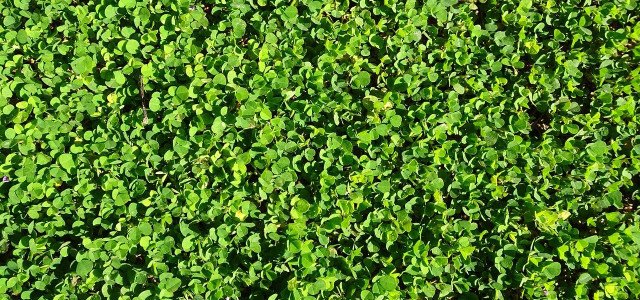If you discover horned sorrel in the garden, you should fight it in time. Otherwise it will quickly spread throughout the garden. We give you tips on how to get rid of the stubborn clover in beds, on meadows and in joints.

The horned sorrel originally comes from the Mediterranean region. However, it has also long been a resident in this country and thrives particularly well in the warm wine-growing regions of southern Europe. It can quickly become a nuisance, because it spreads by self-seeding and is not so easy to get rid of. In dry climates, wood sorrel withers, but sprouts anew as soon as it becomes wetter again.
Like other wood sorrel species, horned wood sorrel is a nectar plant. During the blooming season, it provides food for bees and so can certainly be part of an insect-friendly garden. However, many gardeners still consider horned sorrel a weed – mainly because it reproduces so quickly and widely. As it spreads, the clover can also crowd out grass or other plants. In addition, despite being an annual, it is persistent and often grows back once it has established itself in one spot.
Therefore, it may be wise to control horned sorrel if it catches your eye in the garden and bothers you. You don’t need chemical weed killers to do this: there are also effective natural methods.
Contents
Fighting horned sorrel: How to weed it in the bed
The most effective means of combating horned sorrel in beds is thorough weeding. The right timing is especially important: as soon as horned sorrel forms its seeds in summer, it becomes difficult to weed it out completely. It is a self-seeder and has several ways to spread its seeds. For one thing, it flings them several feet as soon as the seed pods pop in the summer. Second, ants also help wood sorrel to reproduce. They collect the seeds because of their fatty tissue appendage and carry them on in the process. In addition, wood sorrel can also spread via root runners. In the worst case, it takes over large parts of the garden this way.
If you want to avoid horned sorrel, discover it in the bed and it has not yet formed seed pods, you should therefore act quickly. It is best to remove it before it flowers. How thoroughly you need to do this depends on how severe the infestation is:
- If the horned sorrel has not yet spread, you do not need to weed large areas. Then either hoe the plants above ground with a sharp hoe or pluck them out of the ground together with the root. The second method is a bit more time-consuming, but ensures that the clover cannot resprout after control. However, it is possible only on lighter soils – if the soil is too loamy, the roots are very tight and tear off when pulled out.
- If the horned sorrel has already infested larger areas, you cannot avoid removing the roots. Then loosen the entire soil in the upper area piece by piece and remove the plants completely.
To prevent the horned wood sorrel from reestablishing itself in the weeded area, you can then plant it with ground covers. You can find ideas for this in this article: Evergreen Groundcovers: 3 Recommended Plants for Your Garden. A layer of bark mulch can also be helpful in keeping the clover away.
Fighting horned sorrel: On the lawn and in joints

In addition to beds, horned sorrel can also establish itself on lawns. If the infestation is not too severe, it may help to lime the affected lawn. The plant copes less well with calcareous soil. If the lime application doesn’t help, getting rid of the clover is a little more complicated:
Instead of fighting horned sorrel directly, in this case you should first strengthen the growth of the lawn. Supply it well with nutrients and let it grow for about two weeks.
Then mow the lawn and the wood sorrel deeply.
After that you should scarify the lawn and reseed it completely.
In places where the clover was particularly dense, it may be advisable to remove the sod completely. Replace it with new topsoil.
Water the newly seeded lawn generously. Horned sorrel has a hard time resprouting in moist soil.
Horned sorrel is also often found in pavement joints. Here you can get rid of it in the classic way with a joint scraper. Alternatively, you can use a flaming device to control horned wood sorrel. This method is quicker and easier than the joint scraper, but less long-term, because the roots survive the flaming. Therefore, the clover usually grows back.
Other remedies against horned sorrel
Proper weeding is generally the best way to control horned sorrel. Weed killers are less recommended and usually work only for a short time because they do not attack the roots. This allows the clover to recover and resprout after some time. In addition, weed killers damage the soil and there is a risk that they will attack surrounding plants as well. This also applies to natural means such as salt or acetic acid.
To avoid the need to control horned sorrel in the first place, be careful when buying new plants. Often the clover gets into the garden unnoticed this way and settles. Therefore, always check the pot root ball before placing a new plant in the bed. If you find horn clover, pluck it out together with the root and dispose of it. You should also take the precaution of removing the top layer of potting soil to remove possible seeds.

